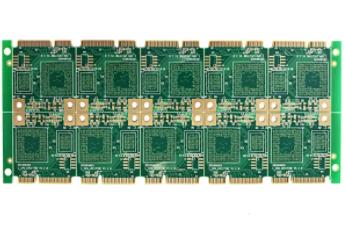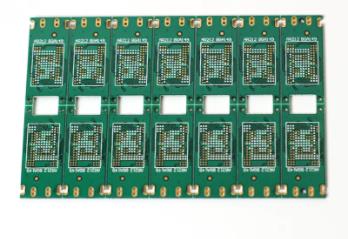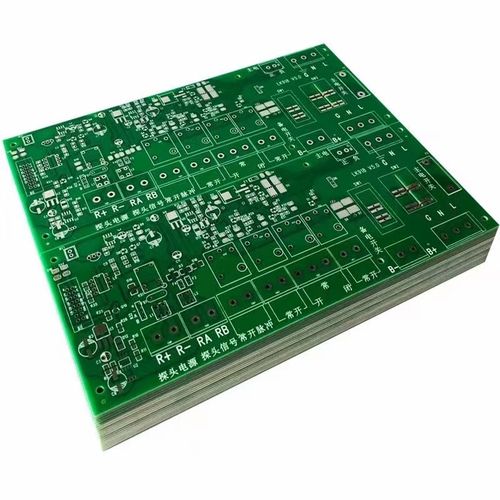
Circuit board factory explains the cleaning technology of circuit board in PCB reading
PCB manufacturers, PCB designers and PCBA manufacturers explain to you the cleaning technology of PCB in PCB copying by PCB manufacturers
At present, the new generation of PCB cleaning technology includes the following four types:
1. Semi water cleaning technology
Semi water cleaning mainly uses organic solvent and deionized water, plus a certain amount of active agents and additives. This type of cleaning is between solvent cleaning and water cleaning. These cleaning agents are organic solvents and flammable solvents, with high flash point, low toxicity and safe use, but they must be rinsed with water and then dried. Some cleaning agents are added with 5%~20% water and a small amount of surfactant, which not only reduces the flammability, but also makes rinsing easier. The characteristics of semi water cleaning process are:
1) The cleaning ability is relatively strong, which can remove polar pollutants and non-polar pollutants at the same time, and the cleaning ability is durable;
2) Two media with different properties are used for cleaning and rinsing, and pure water is generally used for rinsing;
3) Dry after rinsing.
The disadvantage of this technology is that the waste liquid and waste water treatment is a relatively complicated problem that needs to be solved thoroughly.
2. Water cleaning technology
Water cleaning technology is the development direction of cleaning technology in the future, and pure water source and drainage water treatment workshop must be set up. It uses water as the cleaning medium, and adds surfactants, additives, corrosion inhibitors, chelating agents, etc. to water to form a series of water-based cleaning agents. It can remove water solvent and non-polar pollutants. The cleaning process features:
1) Good safety, no burning, no explosion, basically non-toxic;
2) The formula of the cleaning agent has a large degree of freedom. It can easily clean polar and non-polar pollutants, and has a wide cleaning range;
3) Multiple cleaning mechanisms. Water is a polar solvent with strong polarity. In addition to dissolution, it also has the combined effects of saponification, saponification, displacement and dispersion. The use of ultrasound is much more effective than that in organic solvents;
4) As a natural solvent, its price is relatively low and its sources are wide.
The disadvantages of water cleaning are:
1) In areas where water resources are scarce, this cleaning method needs to consume a large amount of water resources, which is limited by the local natural premise;
2) Department components cannot be cleaned with water, and metal parts rust easily;
3) With large surface tension, it is difficult to clean small gaps, and it is difficult to remove the residual surfactant completely;

4) The drying is difficult and the energy consumption is large;
5) The cost of equipment is high, wastewater treatment device is required, and the equipment covers a large area.
3. Clean free technology
Clean free flux or clean free solder paste is used in the welding process. After welding, directly enter the next process without cleaning. Clean free technology is currently the most widely used replacement technology. In particular, mobile communication products basically use the clean free method to replace ODS. At present, many kinds of cleaning free fluxes have been developed at home and abroad, such as those from Beijing Jingying Company. Clean free flux can be roughly divided into three categories:
1) Rosin type flux: inert rosin solder (RMA) is used for reflow welding, and can be washed free.
2) Water soluble flux: clean with water after welding.
3) Low solid content flux: no cleaning.
The cleaning free technology has the advantages of simplifying the process flow, saving the manufacturing cost and less pollution. In the past decade, the universal use of no clean welding technology, no clean flux and no clean solder paste is a major feature of the electronic industry at the end of the 20th century. The ultimate way to replace CFCs is to achieve cleaning free.
4. Solvent cleaning technology
Solvent cleaning mainly uses the solvent's solubility to remove pollutants. Solvent cleaning is adopted. Because of its fast volatilization and strong solubility, it requires simple equipment. According to the selected cleaning agents, they can be divided into combustible cleaning agents and non combustible cleaning agents. The former mainly includes organic hydrocarbons and alcohols (such as organic hydrocarbons, alcohols, glycol esters, etc.), and the latter mainly includes chlorinated hydrocarbons and fluorohydrocarbons (such as HCFC and HFC).
HCFC cleaning agent and its cleaning process characteristics
This is a kind of HCFCs containing hydrogen. It has low latent heat of evaporation, good volatility, is easy to decompose in the atmosphere, and has little effect on the ozone layer. It belongs to a transitional product, which is scheduled to be phased out before 2040. Therefore, we do not recommend the use of this type of cleaning agent.
There are two main problems: one is transitional. Because of its destructive effect on the ozone layer, it is only allowed to use it until 2040; Second, the price is relatively high, and the cleaning capacity is weak, which increases the cleaning cost.
Cleaning process characteristics of chlorinated hydrocarbons
Chlorinated hydrocarbons such as dichloromethane and trichloroethane are also non ODS cleaning agents. The cleaning process features:
1) The ability to clean greasy dirt is particularly strong;
2) Like ODS cleaning agent, it can also be steam washed and vapor dried;
3) The cleaning agent does not burn or explode and is safe to use;
4) The cleaning agent can be distilled and recycled for repeated use, which is economical;
5) The cleaning process is the same as ODS cleaning agent.
However, one of its disadvantages is that chlorinated hydrocarbons are relatively toxic, and safety issues in the workplace need special attention; Second, the compatibility of chlorinated hydrocarbons with general plastics and rubber is poor; Third, chlorinated hydrocarbons have poor stability, so we must add a stability agent when using them.
Characteristics of hydrocarbon cleaning process
Hydrocarbons are hydrocarbons. In the past, gasoline and kerosene obtained by distilling crude oil were used as cleaning agents. The flash point of hydrocarbons increases with the increase of carbon number, which increases the safety, but the dryness is not good; The ones with good dryness are not safe to use, so they are very contradictory. Of course, as a cleaning agent, you should try to choose a cleaning agent with good fire safety and high flash point. The cleaning process features:
1) It has a strong ability to clean greasy dirt, strong durability, low surface tension, and good cleaning effect for slit and pore departments;
2) No corrosion to metal;
3) It can be distilled and recycled, and can be used repeatedly, which is relatively economical;
4) Low toxicity and less environmental pollution;
5) Cleaning and rinsing can use the same medium, which is convenient to use.
The main disadvantage of hydrocarbon cleaning process is safety, which requires strict safety measures.
Characteristics of alcohol cleaning process
Among alcohols, ethanol and isopropanol are organic polar solvents commonly used in the industry. Methanol is highly toxic and generally only used as additives. The characteristics of alcohol cleaning process are:
1) It has good solubility for ionic pollutants, good effect for cleaning rosin flux, and weak solubility for grease;
2) Good compatibility with metal materials and plastics, without corrosion and swelling;
3) Fast drying, easy air drying or air drying, no need to use hot air;
4) Good dehydration, often used as dehydrating agent.
The main problems of alcohol cleaning agents are high volatility, low flash point and easy combustion. Explosion proof measures must be taken for cleaning equipment and auxiliary equipment. PCB manufacturers, PCB designers and PCBA manufacturers will explain the cleaning technology of PCB in PCB copying.









